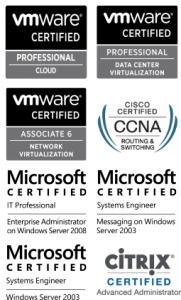Scenario
I recently refreshed our SQL Server Maintenance Plans, but System Centre Essentials has been intermittently reporting failures of the daily differential backups, with an error like this:
Executing the query “BACKUP DATABASE [DBNAME] TO DISK = N’…” failed with the following error: “Cannot perform a differential backup for database “DBNAME”, because a current database backup does not exist. Perform a full database backup by reissuing BACKUP DATABASE, omitting the WITH DIFFERENTIAL option. BACKUP DATABASE is terminating abnormally.”. Possible failure reasons: Problems with the query, “ResultSet” property not set correctly, parameters not set correctly, or connection not established correctly.
The strange thing is that the logs show all Weekly Full backups have completed without error. If I run a manual Full Backup, the next Differential Backup will complete, then the following day will fail.
Solution
First, I used the following query to show more details on the backups (make sure you select the DB in SSMS first):




